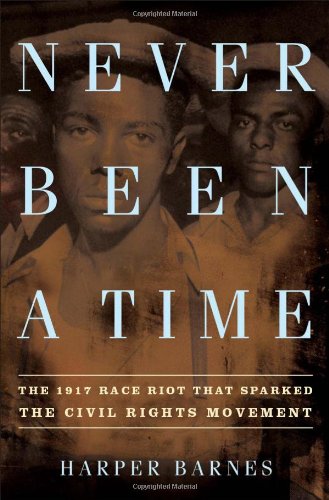

Most ebook files are in PDF format, so you can easily read them using various software such as Foxit Reader or directly on the Google Chrome browser.
Some ebook files are released by publishers in other formats such as .awz, .mobi, .epub, .fb2, etc. You may need to install specific software to read these formats on mobile/PC, such as Calibre.
Please read the tutorial at this link: https://ebookbell.com/faq
We offer FREE conversion to the popular formats you request; however, this may take some time. Therefore, right after payment, please email us, and we will try to provide the service as quickly as possible.
For some exceptional file formats or broken links (if any), please refrain from opening any disputes. Instead, email us first, and we will try to assist within a maximum of 6 hours.
EbookBell Team

0.0
0 reviewsThe dramatic and first popular account of one of the deadliest racial confrontations in the 20th century—in East St. Louis in the summer of 1917—which paved the way for the civil rights movement.
In the 1910s, half a million African Americans moved from the impoverished rural South to booming industrial cities of the North in search of jobs and freedom from Jim Crow laws. But Northern whites responded with rage, attacking blacks in the streets and laying waste to black neighborhoods in a horrific series of deadly race riots that broke out in dozens of cities across the nation, including Philadelphia, Chicago, Tulsa, Houston, and Washington, D.C. In East St. Louis, Illinois, corrupt city officials and industrialists had openly courted Southern blacks, luring them North to replace striking white laborers. This tinderbox erupted on July 2, 1917 into what would become one of the bloodiest American riots of the World War era. Its impact was enormous. “There has never been a time when the riot was not alive in the oral tradition,” remarks Professor Eugene Redmond. Indeed, prominent blacks like W.E.B. Du Bois, Marcus Garvey, and Josephine Baker were forever influenced by it.
Celebrated St. Louis journalist Harper Barnes has written the first full account of this dramatic turning point in American history, decisively placing it in the continuum of racial tensions flowing from Reconstruction and as a catalyst of civil rights action in the decades to come. Drawing from accounts and sources never before utilized, Harper Barnes has crafted a compelling and definitive story that enshrines the riot as an historical rallying cry for all who deplore racial violence.